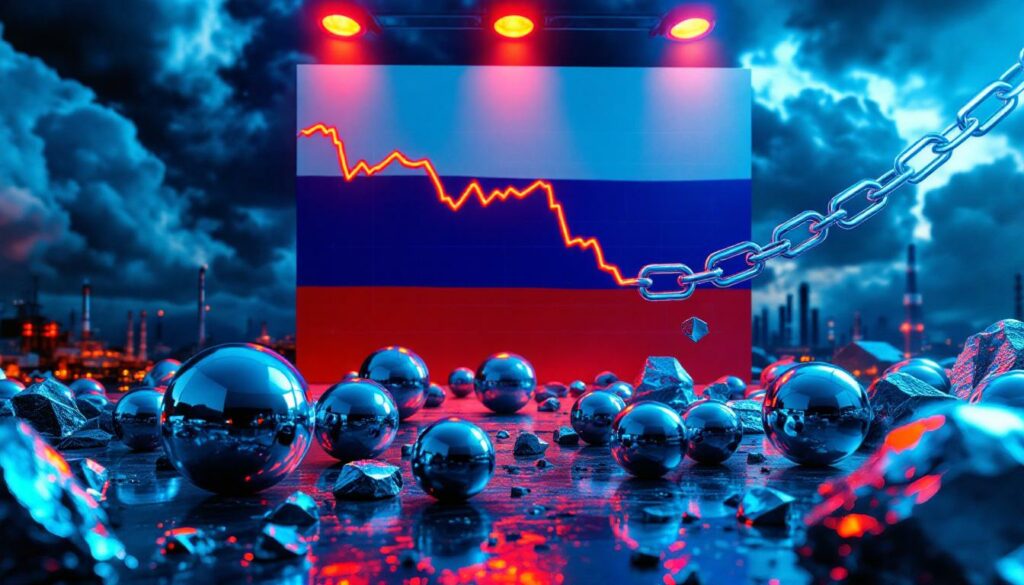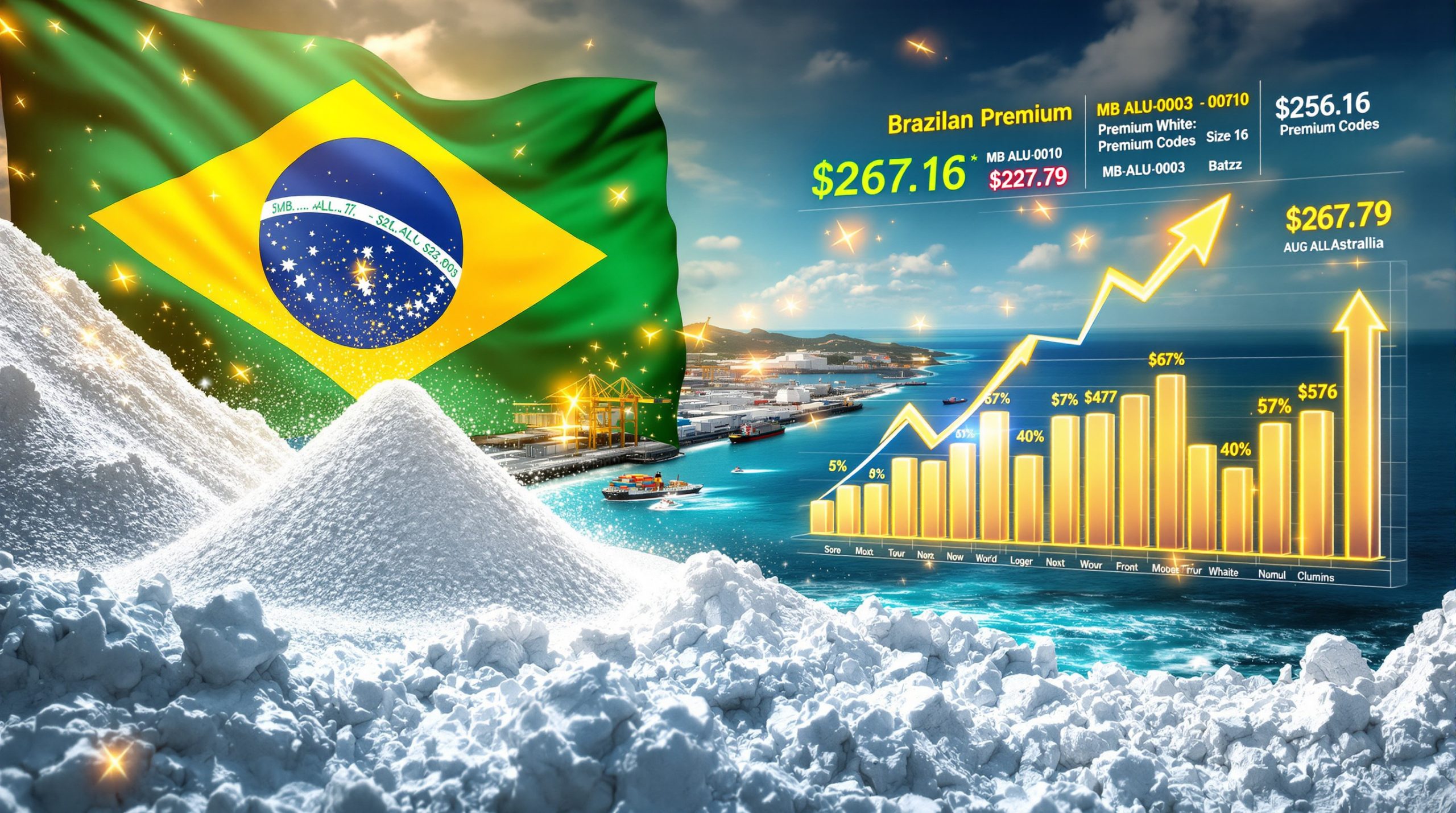The Perfect Storm: How High Interest Rates and Trade Wars Are Battering Nornickel's Performance
In the complex world of global metals production, few companies face as challenging an operating environment as Nornickel. The Russian mining giant, known for its dominant position in palladium and significant nickel output, now battles a convergence of financial headwinds that threaten to reshape its market position and financial stability.
The Current Financial Challenges Facing Nornickel
Russia's Economic Pressures Creating Perfect Storm
Nornickel's financial performance has deteriorated significantly under the weight of Russia's economic policies and global market conditions. The company reported a 37% decline in net profit for 2024, with projections indicating continued deterioration throughout 2025. This decline stems from a combination of domestic and international factors creating a challenging operating environment.
Russia's central bank maintains a staggering 20% key interest rate to combat inflation, creating an exceptional burden on corporate borrowers like Nornickel. This rate—nearly four times higher than most Western economies—dramatically increases debt servicing costs across all operations and expansion projects.
"Extremely high geopolitical uncertainty, continued volatility in target markets against the backdrop of escalating trade wars, risks of a slowdown in global economic growth rates, as well as tight monetary policy, are continuing to have a significant negative impact on the company's financial indicators," warned CFO Sergey Malyshev.
Adding to these pressures, the strengthening rouble has reduced the domestic value of Nornickel's dollar-denominated metal exports. This currency effect creates a paradoxical situation where higher global prices don't necessarily translate to improved profits when converted to the local currency.
Geopolitical Tensions Disrupting Business Operations
While Nornickel has avoided direct sanctions that impact some Russian companies, the broader geopolitical environment has created significant operational challenges. The company faces complex payment processing complications with international partners, forcing adaptations to traditional transaction methods and sometimes creating delays in revenue collection.
Access to Western mining equipment and technology has become increasingly restricted, complicating maintenance schedules and potentially affecting production efficiency. Many specialized components and technologies used in modern mining operations originate from Western manufacturers, creating supply chain vulnerabilities.
Some Western buyers have developed informal policies of avoiding Russian metal products despite the absence of formal restrictions, forcing Nornickel to cultivate new customer relationships and potentially accept less favorable terms from alternative buyers. These conditions mirror broader concerns about how tariffs impact markets globally.
How Global Trade Wars Impact Nornickel's Market Position
Metal Price Volatility Creating Unprecedented Challenges
The metals markets Nornickel depends upon face significant volatility and structural challenges beyond the company's control. After years of deficit conditions, the palladium market is expected to reach balance in 2025, potentially limiting price growth that previously benefited producers.
The nickel market presents an even more challenging picture, with significant oversupply issues creating sustained price pressure. This oversupply stems largely from Indonesian nickel challenges, which has flooded markets with lower-cost nickel.
"We are seeing an oversupply of this metal… in Indonesia everything is organized in a relaxed manner in terms of mining," explained Anton Berlin, Nornickel's vice president.
This competitive disadvantage has created dire industry conditions, with Berlin revealing that approximately 40% of global nickel producers are currently operating at a loss at current price levels. This suggests the potential for production cuts or even producer failures if conditions persist.
The automotive industry—a critical consumer of both palladium and nickel—remains "still in crisis" according to Berlin. This sector-specific downturn further compounds Nornickel's challenges by reducing demand for its key metals at a time when supply pressures are already substantial.
Strategic Responses to Navigate Trade Turbulence
Despite these market pressures, Nornickel maintains a commitment to selling its total production, hoping global Trump tariffs impact won't affect export volumes. This strategy reflects both confidence in finding buyers and a potential reluctance to reduce output due to the high fixed costs of mining operations.
The company has implemented significant capital expenditure reductions and selective project delays to preserve financial stability amid challenging market conditions. These moves prioritize near-term financial health over longer-term growth prospects.
Most notably, Nornickel's board has recommended suspending dividend payments for 2024, a dramatic step for a company previously known for generous shareholder returns. CFO Malyshev explicitly justified this move by stating, "We consider it inappropriate to pay dividends by increasing the level of debt."
Nornickel's Current Market Outlook
Metal-Specific Projections Show Mixed Signals
The palladium market's expected balance in 2025 represents a stabilization after previous volatility, potentially providing Nornickel with more predictable revenue from this key metal. However, this balance also suggests limited upside potential compared to previous deficit-driven price spikes.
Nickel's continued oversupply presents a more concerning outlook, with Indonesian production practices creating sustained price pressure likely to persist through year-end and potentially beyond. This structural challenge presents a fundamental threat to profitability that may be difficult to overcome in the near term.
The automotive industry's recovery timeline remains highly uncertain, creating additional demand volatility for both palladium (used in catalytic converters) and nickel (used in both traditional and electric vehicle batteries). Any acceleration or further deterioration in this sector could significantly impact Nornickel's revenue projections.
Financial Performance Expectations Remain Subdued
Nornickel has clearly signaled continued deterioration in financial results projected throughout 2025, with CFO Malyshev warning of "significant negative impact" on financial indicators. This forthright assessment suggests management sees limited prospects for near-term improvement in operating conditions.
The board's recommendation against 2024 dividend payments represents a dramatic shift in capital allocation strategy, prioritizing debt management over shareholder returns. This decision signals serious concerns about financial sustainability under current conditions.
Investment reductions across the company's project portfolio reflect both financial necessity and a strategic recalibration. By postponing capital-intensive projects, Nornickel preserves financial flexibility while potentially sacrificing longer-term growth prospects.
How Nornickel Compares to Other Global Metal Producers
Competitive Positioning Shows Strengths and Vulnerabilities
Nornickel maintains its position as the world's largest palladium producer and a major global refined nickel producer, providing some market leverage despite challenging conditions. This scale offers certain advantages in customer relationships and operational efficiency.
However, the company faces unique challenges compared to Indonesian producers operating under what Berlin described as "relaxed" mining regulations. These regulatory differences create structural cost advantages for Indonesian competitors that Nornickel cannot readily match.
The company operates with higher cost structures than many international competitors, particularly those in developing markets with lower labor costs and environmental standards. This cost disadvantage becomes particularly problematic during periods of price weakness.
Financial Resilience Under Strain
Nornickel's debt servicing capabilities are significantly strained by Russia's 20% interest rates, creating a financial burden not shared by competitors operating in lower-rate environments. This interest rate differential represents perhaps the single largest competitive disadvantage in current conditions.
The company's investment capacity appears more limited than during pre-conflict periods, potentially creating longer-term competitive disadvantages if global competitors continue expansion while Nornickel postpones development projects. Meanwhile, some competitors are benefiting from JP Morgan mining upgrade recommendations despite industry challenges.
Export flexibility remains constrained by informal purchasing restrictions from some Western buyers, forcing adaptation to new customer relationships and potentially less favorable terms than those available to non-Russian producers.
Strategic Navigation Through Economic Headwinds
Financial Management Prioritizes Stability
Nornickel has clearly prioritized debt management over shareholder returns, implementing a dividend suspension to preserve capital rather than increase borrowing. This conservative financial approach suggests management views current challenges as potentially protracted rather than temporary.
The reduction of investment expenditures represents a pragmatic adaptation to current financial capacity, avoiding overextension during a period of high borrowing costs and uncertain revenue streams. By postponing non-essential projects, the company preserves resources for core operations.
Despite financial constraints, Nornickel maintains focus on operational efficiency, seeking cost optimization opportunities that don't require significant capital investment. This approach balances short-term financial preservation with longer-term competitive positioning.
Market Adaptation Shows Resilience
Nornickel has maintained production levels despite market oversupply, reflecting confidence in finding buyers for its output. As Berlin stated, the company "aims to sell everything it produces," suggesting a strategic decision to prioritize market share and operational continuity over price support through production cuts.
The company has actively sought new buyers to replace hesitant Western purchasers, demonstrating adaptability in response to geopolitical complications. This market diversification strategy reduces vulnerability to politically-motivated purchasing decisions by traditional customers.
Nornickel continues monitoring trade dispute developments for potential opportunities, positioning to capitalize on any market rebalancing that might emerge from current disruptions. This vigilance reflects recognition that volatility creates both threats and potential advantages for nimble market participants.
Future Scenarios: Recovery Paths and Persistent Risks
Potential Recovery Catalysts
Interest rate reductions would significantly improve Nornickel's debt servicing costs and overall financial position. Any moderation in Russia's monetary policy could provide immediate financial relief and enhance investment capacity.
An automotive industry revival would boost demand for both palladium and nickel, potentially creating more favorable pricing conditions. This sector represents a critical demand driver that could improve market fundamentals independent of supply-side developments.
Any easing of geopolitical tensions might reopen Western markets more fully, reducing transaction frictions and potentially expanding the buyer pool for Nornickel's products. Even incremental improvements in political relations could yield tangible commercial benefits.
Persistent Risk Factors Demand Vigilance
Continued high interest rates threaten long-term financial sustainability by increasing debt costs and reducing investment capacity. The duration of Russia's tight monetary policy represents a critical variable in Nornickel's recovery prospects.
Persistent trade wars could continue disrupting global metal markets, creating unpredictable price movements and complicating strategic planning. These geopolitical factors remain largely beyond the company's control but central to its operating environment.
Further Indonesian production expansion could place additional pressure on nickel prices, extending the current oversupply conditions. This competitive threat represents a structural challenge that may require fundamental adaptations rather than temporary measures, as US tariffs and debt concerns continue to reshape global trade patterns.
FAQ: Understanding Nornickel's Position Amid Economic Headwinds
Why did Nornickel suspend dividend payments for 2024?
Nornickel's board determined that increasing debt levels to pay dividends would be inappropriate given current financial pressures. As CFO Malyshev explicitly stated, "We consider it inappropriate to pay dividends by increasing the level of debt." This decision prioritizes financial stability over shareholder returns during an exceptionally challenging period.
How is Indonesian nickel production affecting global markets?
According to Nornickel's vice president Anton Berlin, Indonesia's "relaxed" mining regulations have enabled producers to flood the global market with lower-cost nickel. This oversupply has created significant price pressure, forcing approximately 40% of global producers to operate at a loss under current market conditions.
What impact are high interest rates having on Nornickel's operations?
Russia's 20% key interest rate significantly increases Nornickel's debt servicing costs, reduces investment capacity, and forces the postponement of various development projects. This extraordinarily high rate creates financial constraints that limit strategic options and place pressure on overall profitability.
How are trade wars affecting Nornickel's export strategy?
Despite hoping that global trade disputes won't impact export volumes, Nornickel faces increased uncertainty and market volatility. The company aims to maintain its strategy of selling all produced metals, though potentially to different buyers than in previous years as some Western purchasers have reduced Russian metal purchases.
Disclaimer: This article contains analysis of market conditions and company performance based on publicly available information as of June 2025. Future developments may differ significantly from projections. Readers should conduct their own research before making investment decisions based on this content.
Want to Spot the Next Major Mineral Discovery Before the Market?
Stay ahead of the curve with Discovery Alert's proprietary Discovery IQ model, which provides instant notifications when significant ASX mineral discoveries are announced – giving you the edge while others are still analysing the news. Explore how historic discoveries have generated substantial returns by visiting Discovery Alert's dedicated discoveries page.




